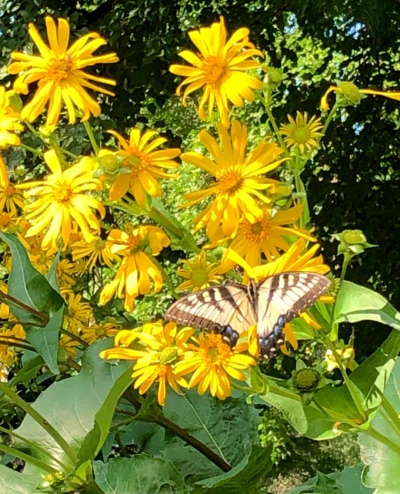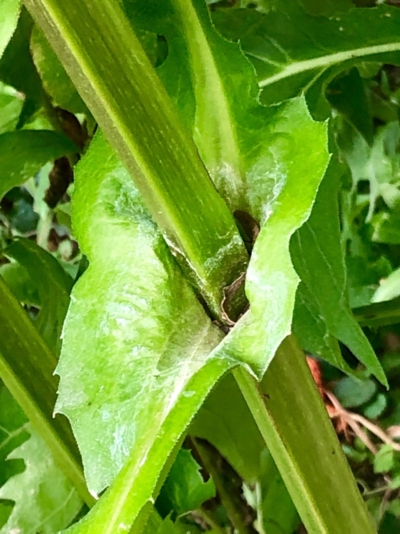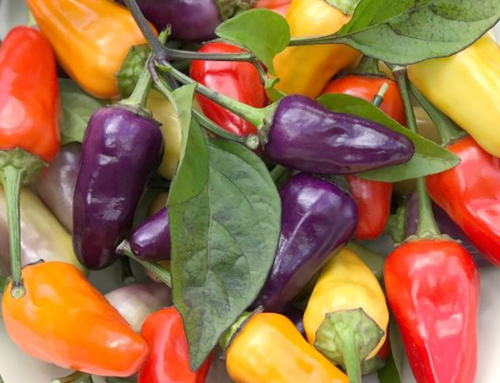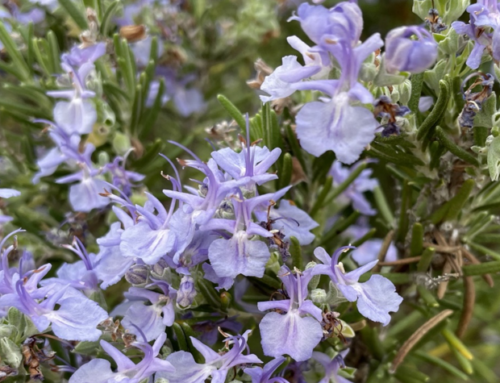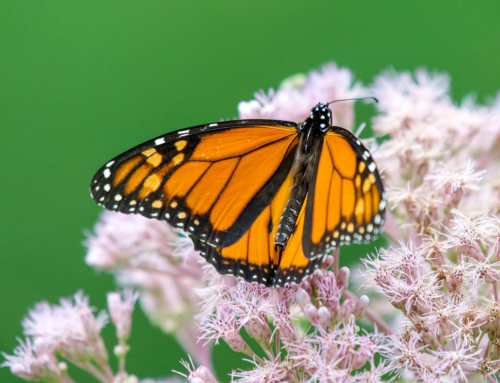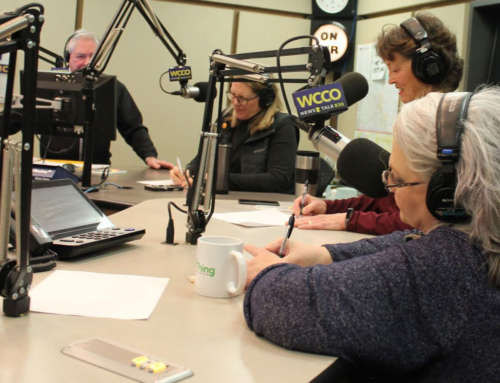In my second year as a master gardener I was part of a team that created some gardens for one of the Hennepin County libraries. Their request was for native prairie plants that would attract pollinators. The library had twin stone circular planters banking the front entry. This location offered full sun so we had many choices. After measuring the area we designed a pie shaped garden full of vibrant colors. Our esteemed coordinator suggested one plant I was not familiar with; “cup plant;” “Silphoum perfoliatum”. He generously offered to donate plants from his own garden so of course they were added to the final design. I had never heard of this plant and was really curious about its’ name. It is a native, resembles a common sunflower and can reach 8-10 ft. We added 3 for each garden and they were placed in the middle. The gardens turned out lovely and are a welcoming sight for library patrons. The garden outside of the Hennepin County Master Gardener office also contains cup plants, quite likely from the same source. Check them out if you are in the area.
I wanted to find out more about why this plant is such a favorite of our coordinator so I went straight to the horse’s mouth to get the scoop. Here are his reasons.
- This plant is extremely tough. Mine have survived in less than ideal conditions including poor soil, some shade, and a black walnut tree. I also have dogs, which can add to the challenge.
- It blooms profusely starting in August and continues for 4-6 weeks with bright yellow blooms.
- They are pollinator magnets and I have seen honeybees, bumble bees, monarchs, and yellow and black swallowtails.
- I attended a workshop where I learned that they are attractive to many other insect species (17). I have personally seen various spiders and lightning bugs.
- The shape of the leaves forms a “cup” which collects rain.
- They also attract birds, especially finches. They enjoy the seeds and the chance for a drink.
- They are resistant to most pests including deer and rabbits. Red aphids show up but don’t seem to harm the plant.
After hearing all of these positive traits about the cup plant, I decided to add a couple to my native garden. I have found that I enjoy them as well. Within three years I have gained a small colony of them. They can be a bit invasive, spreading by rhizomes. I have shared some with neighbors and friends that have admired their cheerful blooms. They also love the background story behind the name. It is after all, a natural bird/ insect bath and what’s not to like about that? This unique plant offers many benefits for the garden and it is one that will surely generate lots of “buzz!”
Find out more: https://www.minnesotawildflowers.info/flower/cup-plant
By Val McGruder, Hennepin County Master Gardener volunteer
